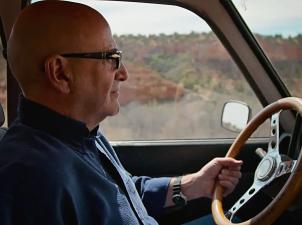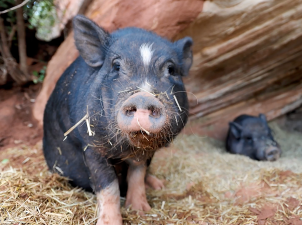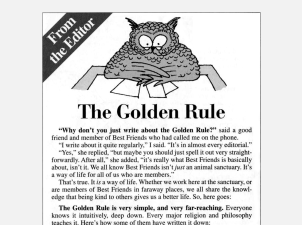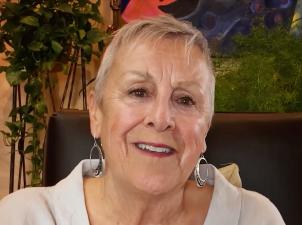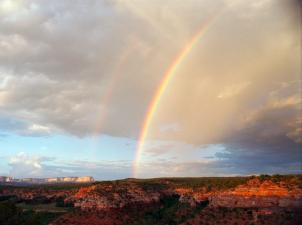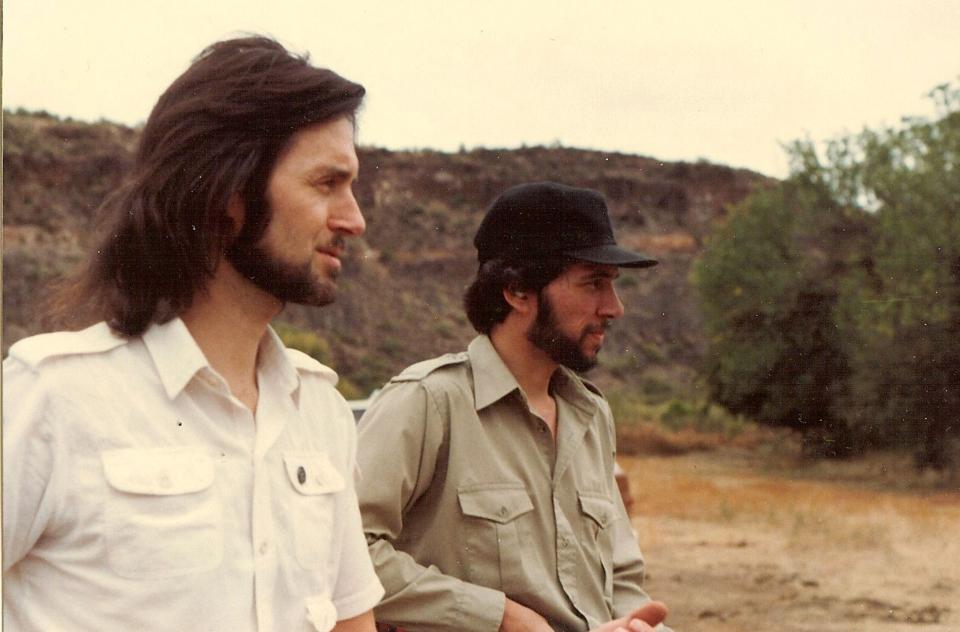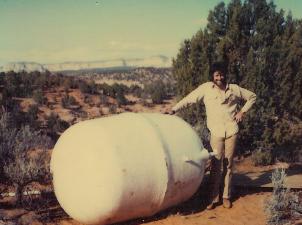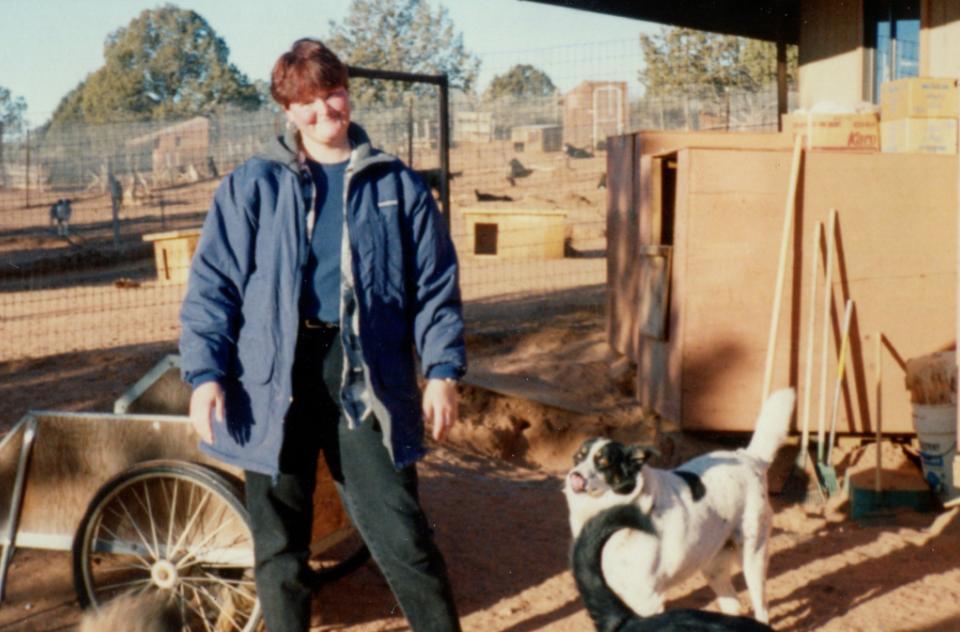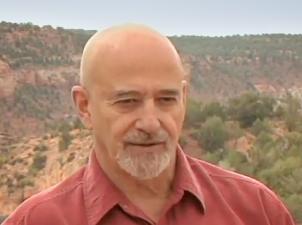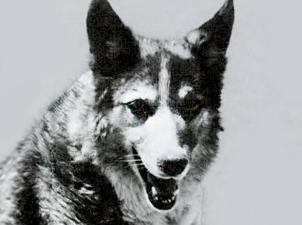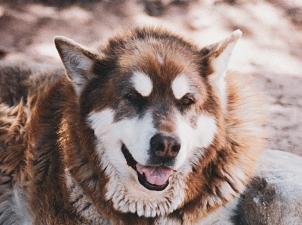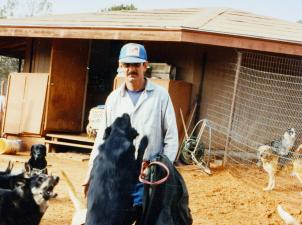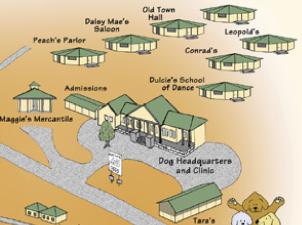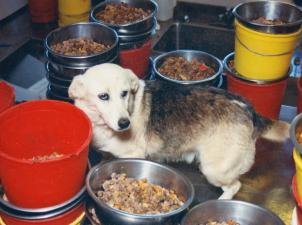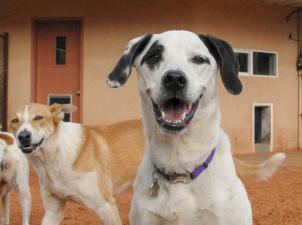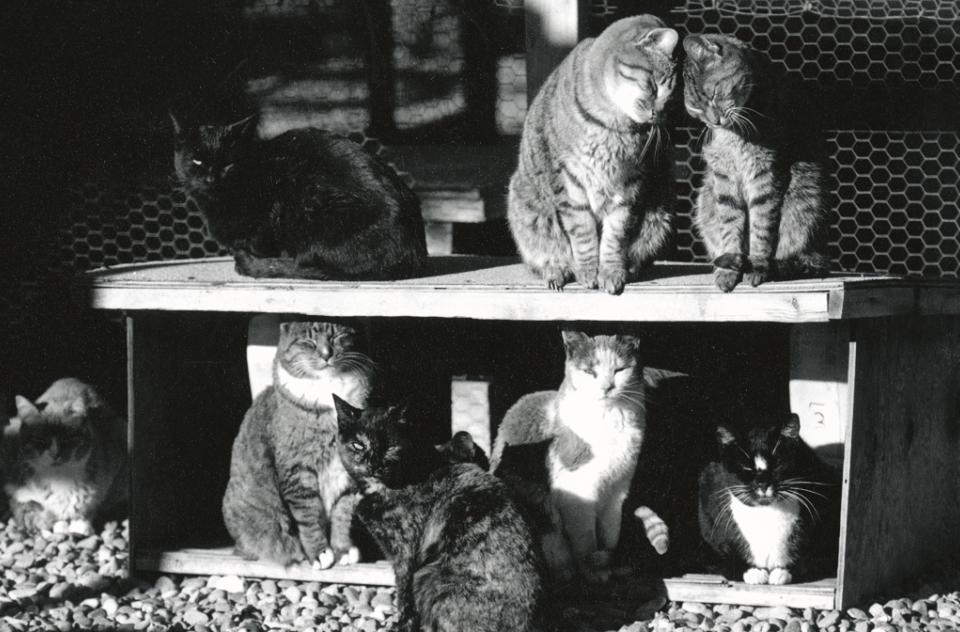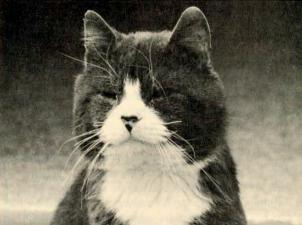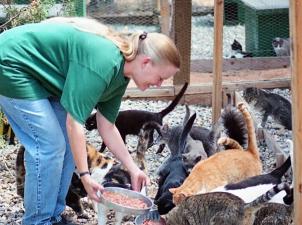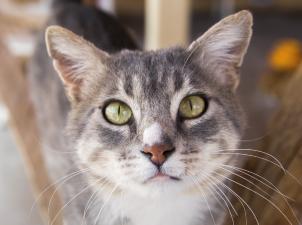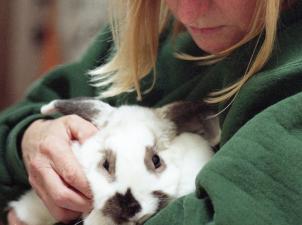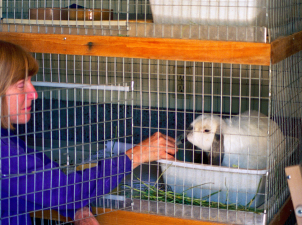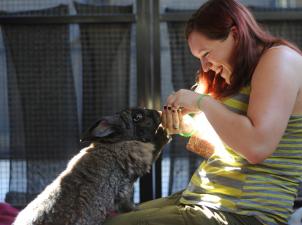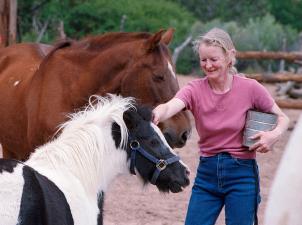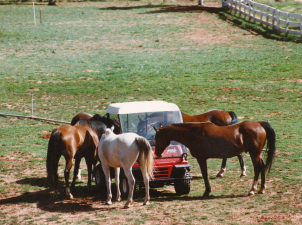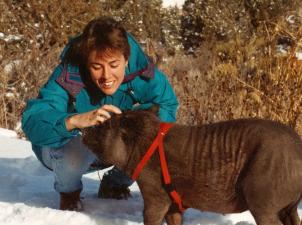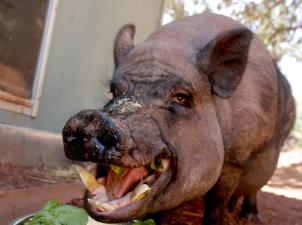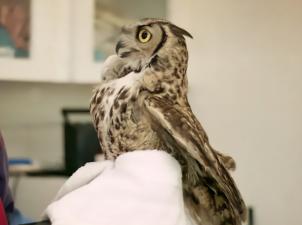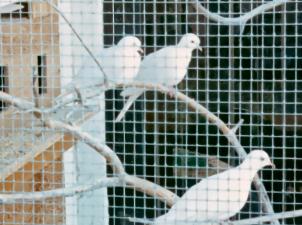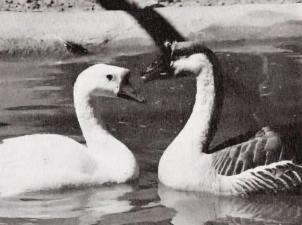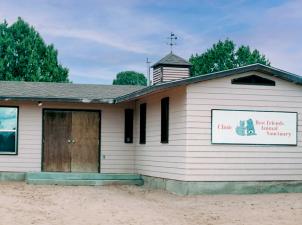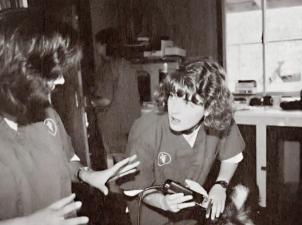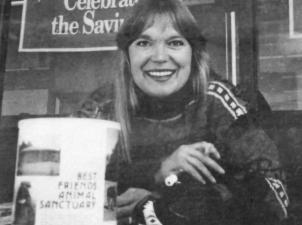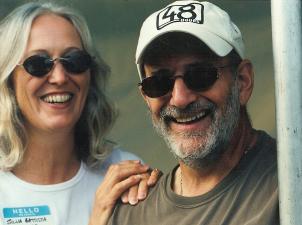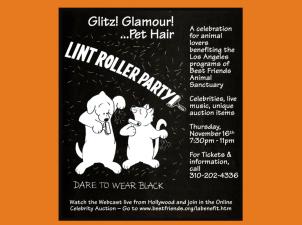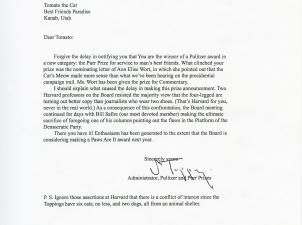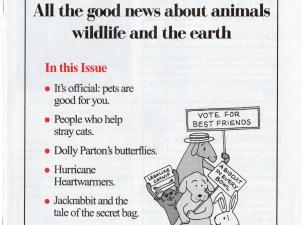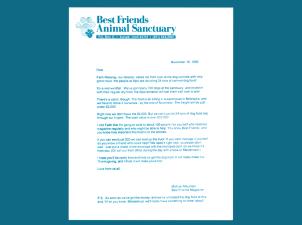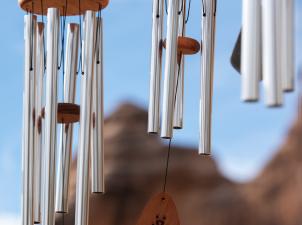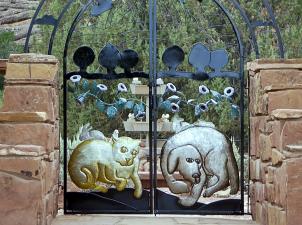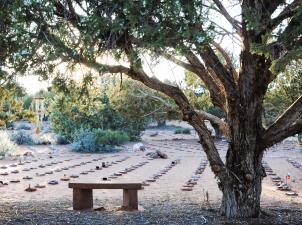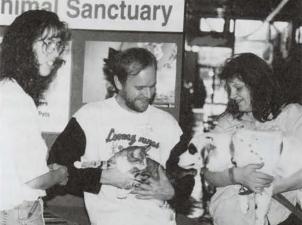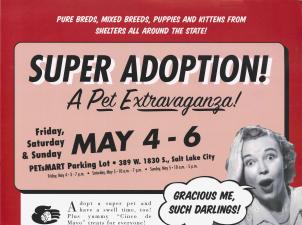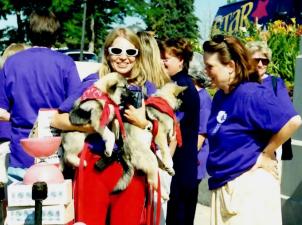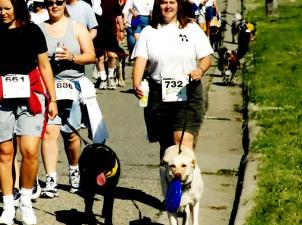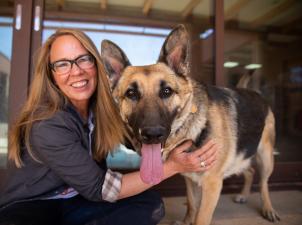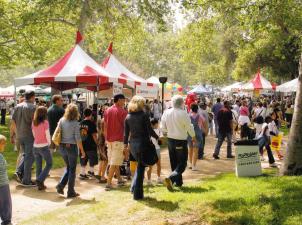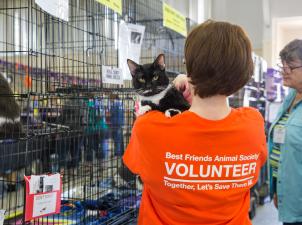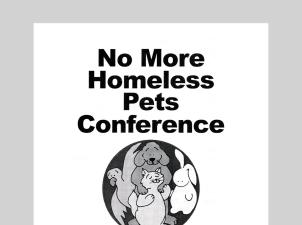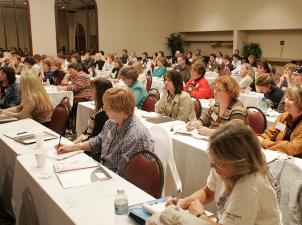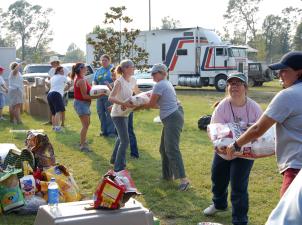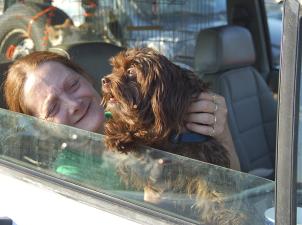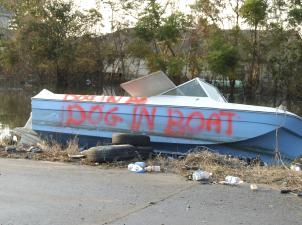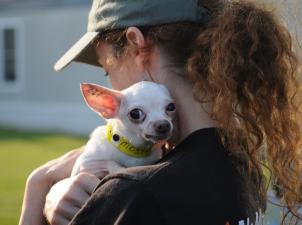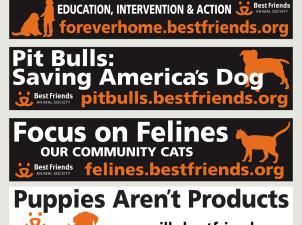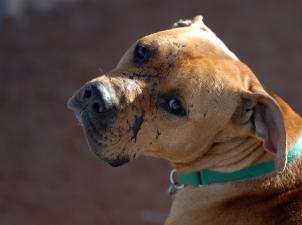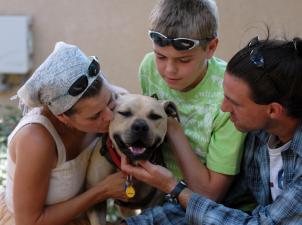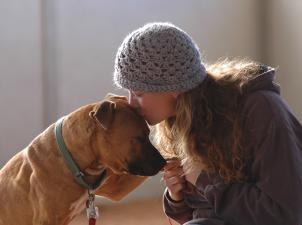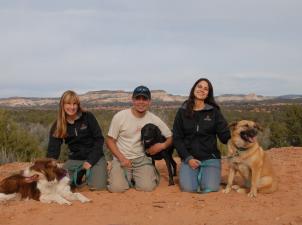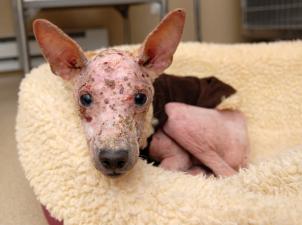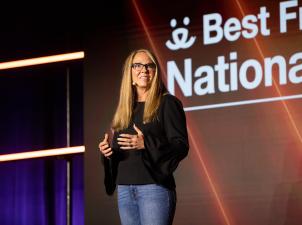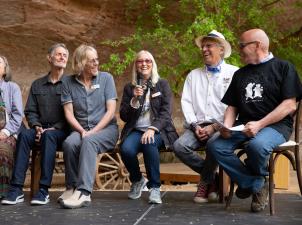The story of Best Friends
Best Friends is much more than a spot on the map. It’s a group of ordinary but passionate people across the country (including you!) who believe every pet in every community is worth saving.
In 1984, a group of friends along with about 200 rescued dogs and cats, a few bunnies and birds, and a couple of burros landed in a remote canyon in Utah's high desert and took the first steps on the path of what would become the nationwide no-kill movement for homeless pets.
They had been individually and collectively involved in animal rescue and advocacy for a number of years, rescuing dogs and cats with special needs and from high-risk shelters. And like most rescuers, they shared a dream of having “a place in the country” where they could bring in as many animals as they wanted without concern about neighbors or landlords. That dream came true, but they had no idea where it would lead. They had no idea at the time that what they were about to start would become a nationwide movement.
The goal was to make not just a place to house homeless pets but a place of healing — a place where every animal, regardless of any special needs, would feel welcomed and every pet would be considered unique and adoptable. It would be a place that exemplified the truth that kindness to animals makes a better world for all of us.
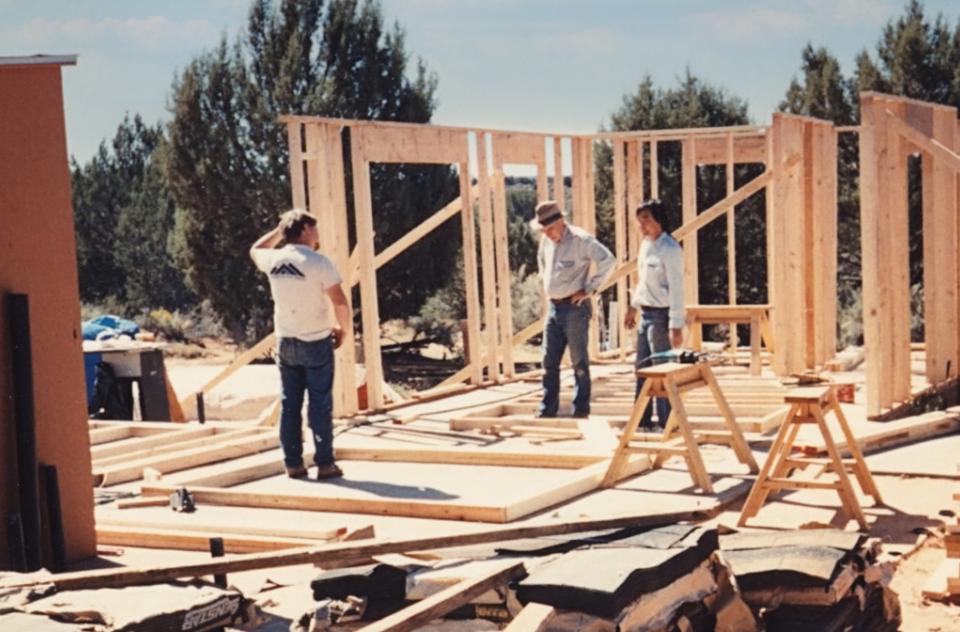
1984
Mad dogs and Englishmen
“What has happened here is not because of any one of us but because all of us who have very different visions and personalities have managed to set that aside in the quest for the greater thing.” — Jana de Peyer
Best Friends began without much fanfare. There was no official board leadership, strategic plan, or outreach strategy. There was just a group of friends who had the same dream of helping animals and finding a place to do that together. Read more
They were an unlikely mix of individuals and skills, ranging from Oxford and Cambridge grads to college dropouts and dreamers — three architects, one engineer, five art school grads, one British stage actress, an Afro-Cuban bass player, a CPA, a real estate agent, an heiress, a few writers, a couple of people who could do basically anything they put their hand to, and a bunch of really smart, dedicated folks. They were all united by the desire to create a future on their own terms and to save animals while doing so. They endeavored to live by the golden rule — to treat others, including animals and the land, as they would want to be treated — and believed that most of the world’s problems stemmed from our broken relationship with the natural world and more specifically with the animals. The place to start was with the animals in our inner circle — those who have been our friends and companions for thousands of years.
Financially, the founders had just enough money to make an acceptable offer on the more than 3,300 acres of raw land in a red-rock canyon that would become Best Friends Animal Sanctuary in Kanab, Utah. Then as now, the canyon and the animals provided all the inspiration and incentive needed for them to set out on their improbable journey. Beyond their acquired animal care skills, the only necessary qualification was a willingness to try their hand at whatever was needed and figure it out along the way.
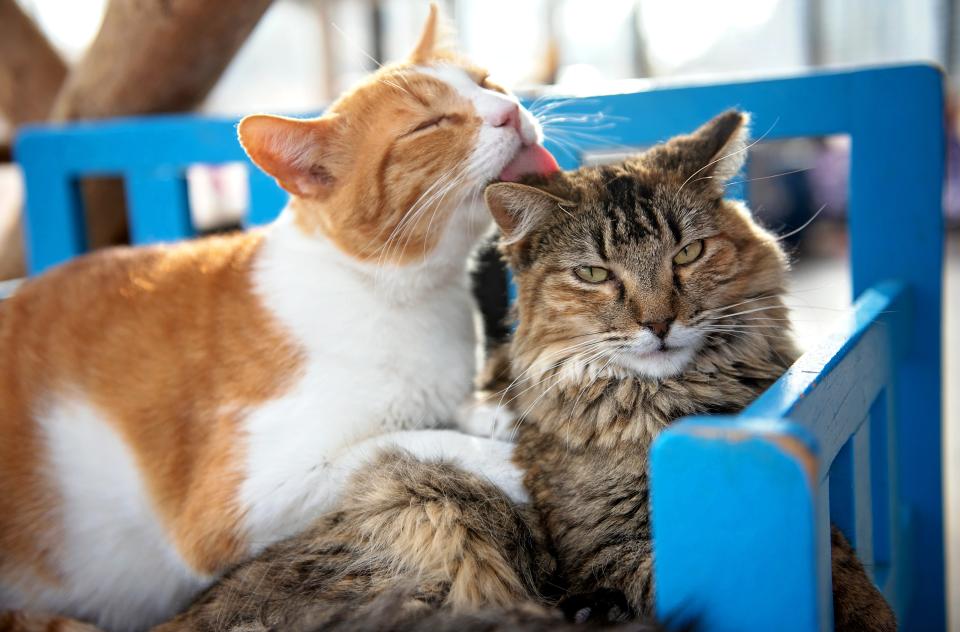
Kindness
Being kind to the animals, to the Earth, and to each other was the founding idea of Best Friends.
The philosophy of Best Friends is simple: Be kind. It’s what led to starting the Sanctuary in the first place — the knowledge that there were animals out there with no one to look after them, often being killed in shelters, and that if we could do even something small to help them, then we should. That philosophy extends to our belief in how we should treat one another and our members, how we should treat shelters and other animal welfare groups, and how we should treat the world at large. Read more
Best Friends has held the golden rule as a guiding principle since we began. It’s a simple idea that has withstood the test of time and shows up in virtually every ethical, moral, and religious framework going back thousands of years. “Treat others the way you want to be treated.” That’s it. It’s just that simple.
The canyon
Angel Canyon is a miracle of nature. What happens inside it every day is a miracle of love.
The canyon that is home to Best Friends Animal Sanctuary is a place of beauty and sanctuary by its very nature. We have always viewed the canyon as a living entity that has helped guide our work from the beginning. Most visitors who spend even a few days here come to see it as a sacred place in whatever way that has personal meaning. Read more
When they arrived, the founders knew that they had stepped into the role of stewards and protectors of this sacred land. They were and are in awe of the monumental landscape and the natural harmony and seasonal cycles of the canyon. With little more than hand tools and a few trucks, they had no presumption of shaping the land to their design but rather shaped their designs to the will of the land and learned to respect and protect the animals, plants, and trees that came before.
Native people have known of the canyon long before Europeans arrived. Throughout Angel Canyon, you can find remnants and artifacts of Indigenous communities who once lived and thrived here. A Paiute elder told us that leaders would gather at a particular spot we now call Angels Landing to seek guidance from Mother Earth. They have long known what visitors continue to learn every time they visit: that the canyon is not only physically beautiful but spiritually beautiful. And our relationship to it was key both to the founding of the Sanctuary and to everything that would come after.
watch video1984
Breaking ground
Hard work was in store for the founding friends as they built the first buildings and laid the first electrical lines.
The Sanctuary was a nearly empty plot of land when we arrived. And while a couple of us did happen to be architects, none had ever physically built a building before. So we became scavengers. We looked for building materials wherever we could find them. We learned to become electricians and plumbers. Read more
Soon we were constructing roads (always around trees so we didn’t have to cut them down). We were building structures for people and for animals. And we were making it happen. This would be a theme for the rest of Best Friends’ evolution: learning as we go and figuring out a way to do the impossible.
watch videoWelcome to Best Friends Animal Sanctuary
By 1990, Best Friends was now a bona fide animal sanctuary, with 1,500 or more dogs, cats, bunnies, birds, horses, and pigs on any given day.
The founders soon learned that it wasn’t just buildings, good intentions, or even great caregiving that made the Sanctuary special. It was the animals themselves. With their own personalities and inner lives, they began to shape the narrative of Best Friends. It was their place every bit as much as it was the founders’.
The 1990s
The Sanctuary
Creating a paradise for abused and abandoned animals
Once, the idea of a super-sanctuary was just a dream, shared among the founders and unknown animal lovers all over the country. Then, it became a dream come true for dogs, cats, and other animals whose luck seemed to have run out but who found themselves in this very special haven with good food and loving care — a beautiful place where they'd never again be afraid or alone or hungry or in pain. Read more
"We wanted to give as many as possible the kind of new life that would make up for whatever miserable things had gone before," says Faith Maloney, then-director of this unique sanctuary for the most helpless, abused, abandoned animals in our society.
watch video
The other founders
Best Friends’ first animals left their permanent marks on the Sanctuary.
Amiable Amra, a 145-pound red malamute, was designated sheriff of Dogtown. He kept order not with aggression but just by virtue of his huge size and unflappable demeanor. His constant companion Rhonda, a small wirehaired mutt, loved Amra and he loved her. She was shy and fearful around people but felt safe and happy at his side.
Ginger, a Chesapeake Bay retriever from a local backyard breeding operation, was the treasurer of Dogtown and gathered up hundreds of yellow tennis balls and kept them safe under a tree. The sea of yellow was known as Chesapeake Bay. Read more
Victor was The Dogfather. He wasn’t very big, but he had attitude, and he and his gang claimed a section of Dogtown beyond an invisible line that all the other dogs were very aware of. Even Sheriff Amra wouldn’t cross it, even after Victor’s passing.
These were the other founders of Best Friends. They were the animals who formed the culture of the Sanctuary and taught us who would always be the bosses around here.
And they certainly weren’t just dogs. Benton was the CEO of Benton’s House for cats with special needs. He himself had a floppy front paw and an immense interest in the development of a sanctuary section just for cats like him. The Colonel was our resident bad boy. (He’d gotten in trouble for chasing chickens.) Mollie the pig lost her home because of “no pigs” zoning and made a name for herself as Best Friends’ first pig.
These founders, too, were making history.
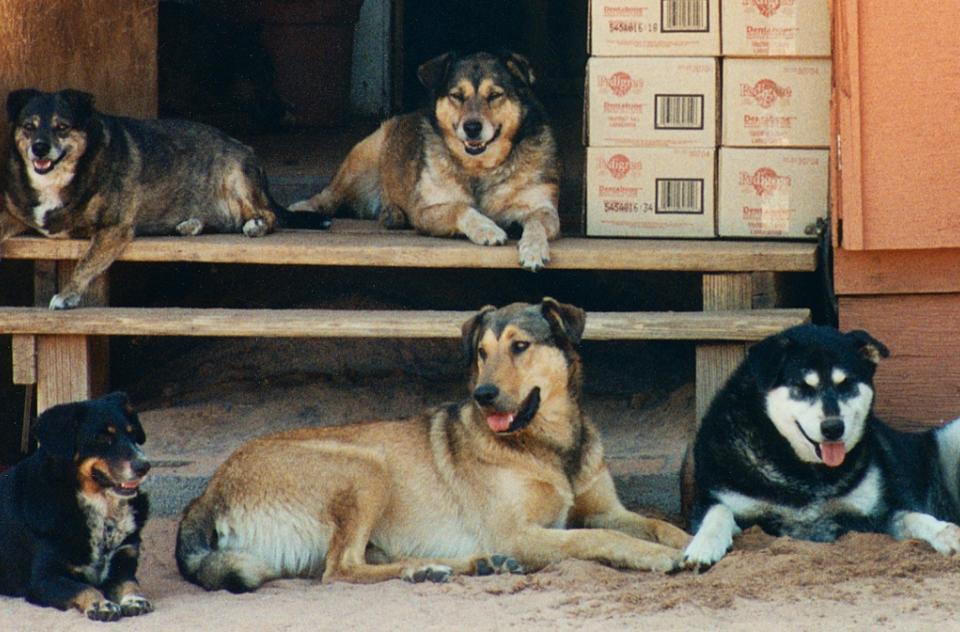
Dogtown
The section of the Sanctuary devoted to dogs, Dogtown, was built with a unique design, intended to give dogs freedom, companionship, and community.
We always like to say that it’s the only town in America that literally “went to the dogs.”
Dogtown was indeed designed to be a little town in the heart of Best Friends Animal Sanctuary, with winding dirt roads and stucco houses. Utilizing a unique design we call “octagons,” the houses were built for dogs to live in small groups of friends. Because of the buildings’ shape, a caregiver could stand at the center, observing all the groups of dogs at once in both their indoor rooms and outdoor yards. read more
Its first manager was Faith Maloney, one of the co-founders of Best Friends, and her supervisor was Tammy the dog. The darling pup who’d been rescued from an abusive home had taken to following Faith everywhere she went, observing her every move and just generally making sure that Faith was doing a satisfactory job. Together, they carefully watched the dogs’ needs and gradually turned Dogtown into a home-between-homes for thousands of dogs.
Cat World
The cat area of the Sanctuary was designed especially for cats and tailored to fit a variety of personalities and special needs.
At first, the fencing at Cat World was all chicken wire — a far cry from the luxurious buildings you’ll see today. But right from the start, every cat’s needs were tended to. The felines were given cozy hideouts as well as open-air safe enclosures. They had the opportunity to build friendships among themselves. Medical needs were tended to. And what always made Cat World so special is that the cats really owned the place, while the humans just did their bidding. Read more
Diana Asher was Best Friends’ original “cat lady.” She loved and cared for the cats day and night. But it was thanks to cats like Benton and Julius, who showed us how happy cats can be with special needs, that the TLC Cat Club was born. And Cat World became a haven not just for cats who were homeless but also cats who needed extra care.
watch video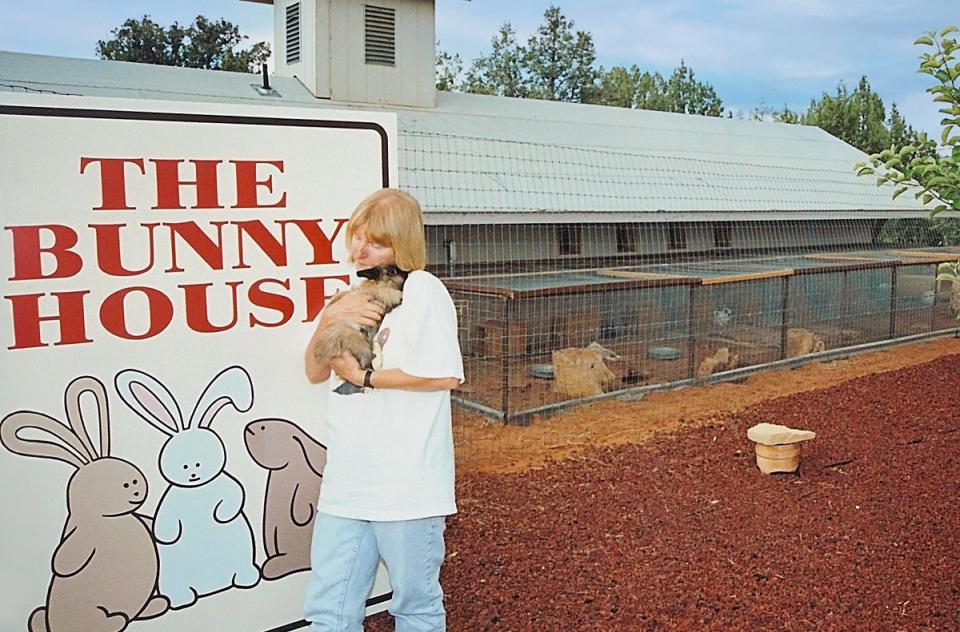
Bunny House
Bunny House is one of the cutest places on Earth, and it really grew with one big rescue.
Domestic rabbits become homeless for all the same reasons that dogs and cats do. They make wonderful pets, but they require more care than some would expect. And, of course, if you don’t spay or neuter them, they can really multiply. From the very beginning, we had some bunnies in our care. But it was nothing like what happened after one call came in. Read more
Co-founder Chandra Forsythe picked up the telephone one day to hear an elderly lady explain that with two broken hips, she needed someone to rescue her rabbits. How many? 100, she said! But it turned out to be 170. With that one rescue, the Bunny House and the number of rabbits we cared for quickly grew.
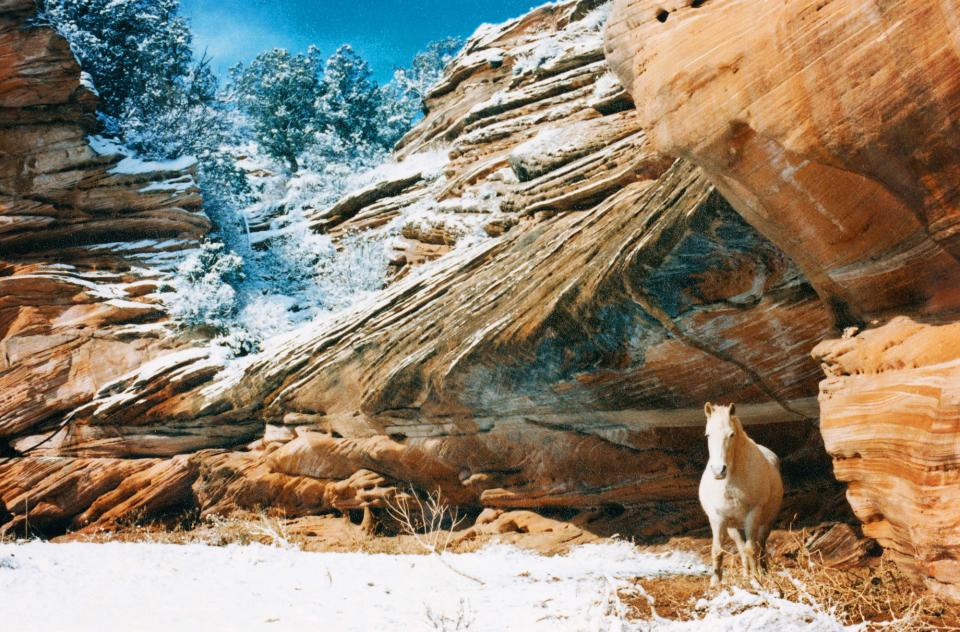
Horse Haven
Horse Haven was created as the part of Best Friends to welcome horses, goats, sheep, donkeys, and even pigs.
The canyon makes a beautiful backdrop for pastures. Nowhere at Best Friends can you enjoy the scenery more than at Horse Haven, where fields are cradled by red-rock cliffs and every morning’s sunrise is spectacular over the manes of grazing, happy horses. Horses who were neglected or abandoned soon began seeking refuge here. Then gradually, it became a haven for homeless goats, sheep, and donkeys as well. Here, they could all heal, learn, bond, and run free. They could also find homes. Read more
There was also a place for pigs (which later became Marshall’s Piggy Paradise). And that began with Mollie, a pig who lost her home because zoning laws prevented her from continuing to live with her family. She had a big personality and will always be known as “the founding pig” at Best Friends.

Feathered Friends
Best Friends opened a quiet retreat for homeless domestic birds, as well as a state and federally licensed wildlife rehabilitation center to heal and release wild ones.
Parrots can live to be 100 years old, which can make finding them permanent homes a challenge. They require a lot of care and often outlive their families. That’s one of the reasons Best Friends founders built Feathered Friends to look after homeless pets who can fly. Read more
In the early days, Sharon St. Joan, a state and federally licensed wildlife rehabilitator and one of the co-founders of Best Friends, helped all sorts of flying friends. She looked after domestic birds of every variety — parrots, songbirds, doves — in the quite little Feathered Friends retreat. At the same time, she treated injured wild birds and helped them get back into the sky.
Today, we’ve separated the areas into Parrot Garden and Wild Friends. But back then, things were a little scrappier, and Sharon did it all.
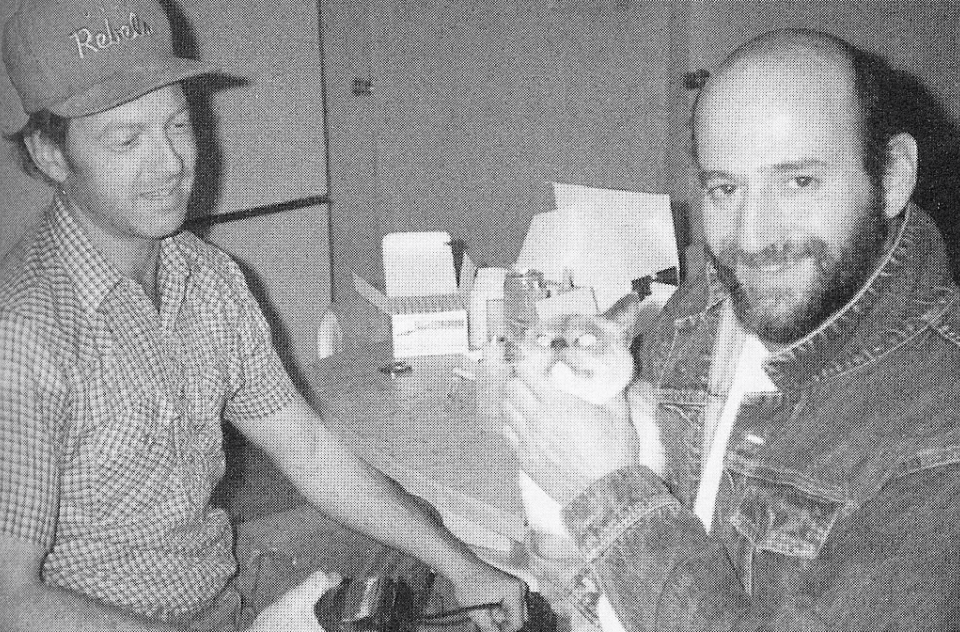
Best Friends Animal Clinic
On-site veterinary care for the animals was something we needed from the very beginning.
None of Best Friends’ founders were veterinarians. But with a sanctuary full of animals, getting a vet to make regular visits was imperative. As fate would have it, they crossed paths with a young veterinarian, Dr. Bill Christy, with a newly established large and small animal mobile practice out of Panguitch, Utah, about an hour north of the Sanctuary. He was a kindred spirit and very generous with his knowledge, helping several founders learn the basics and what to do in emergencies until he could get there. Because he had a farm practice that covered hundreds of miles from one end to the other, it could often be a day or two until he could get to the Sanctuary. Read more
The first clinic at Best Friends was an old Airstream trailer with a rotted-out floor, no windows, and shag carpeting. Dr. Bill arranged for us to get it in exchange for taking in a colony of “woodpile cats” from one of his farmer clients. They fixed it up and installed plexiglass sheets for windows while Dr. Bill located a very old OB/GYN table, stirrups and all, for our first surgery table. We christened it The Silver Bullet after the beer commercials of the day and couldn’t have been more proud. Dr. Bill did a lot with very little, and in truth there would not be a Best friends today if not for him. Sadly, he died in a highway accident making a late-night run after a very long day.
Eventually, that trailer was replaced with a real building that was filled with equipment the founders salvaged from the demolition of a children’s hospital in Las Vegas. They were a scrappy bunch! That in turn was replaced in 2013 by the Best Friends Animal Clinic you’ll find at the Sanctuary today. It’s spacious, modern, comfortable, and boasts the finest medical technology, offering the best care available to homeless pets.
Sanctuary meets world
As word of Best Friends spread, we began to connect with individuals and organizations around the country who were inspired by the idea of no-kill.
As we started to reach out, we received letter after letter from people saying, “I thought I was the only one who felt this way about the animals.” Not only did they want to help with the work we were doing to care for homeless pets at the Sanctuary, but they wanted to be a full-fledged part of it. They wanted to visit, they wanted to volunteer, and they wanted to give to the animals.
Our concept of “us” grew and expanded. We were not alone.
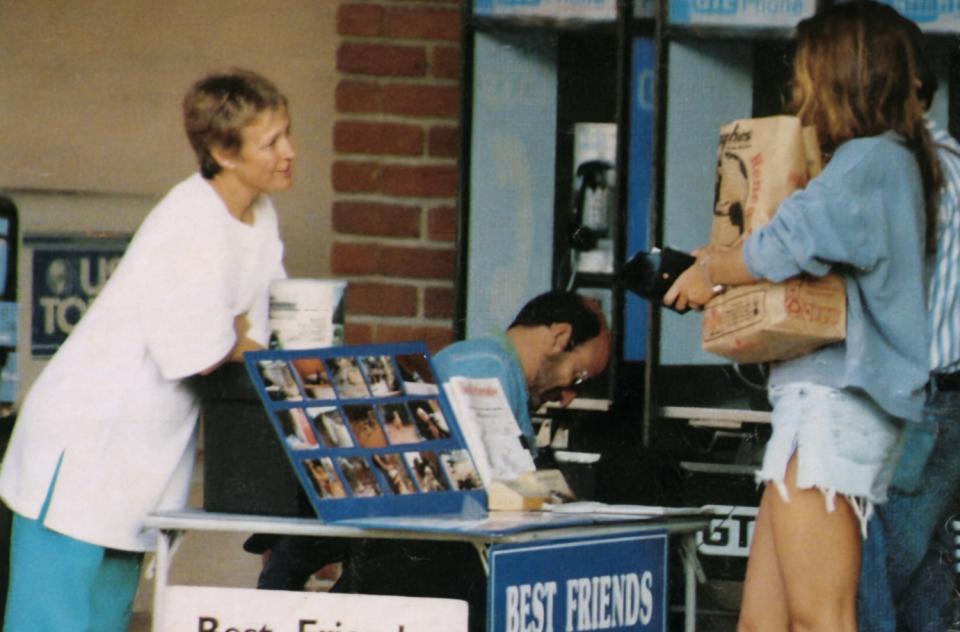
1990s
On the road
“We had no visible means of support. But we were all in it together.” — Francis Battista
In 1990, the founders of Best Friends ran into a financial wall, with many mouths to feed and no practical fundraising operation. Necessity being the mother of invention, they set out to meet people and raise money at a very basic level. They set up card tables in busy places, offering information and requesting donations. Read more
Money was very tight. By now, Best Friends was serving as the local animal control service in addition to regularly receiving calls about individual pets who needed sanctuary. There were new animals arriving all the time, but cash was running out.
So they hit the road and took their card tables and coffee cans for donations to grocery and health food stores across the West. They set up tables where passersby could meet them, learn about the animals, and find out what “no-kill” meant. At that time, many people had no idea. In fact, many people thought that all shelters were no-kill, when in fact there were an estimated 17 million dogs and cats being killed in shelters every year.
“Tabling,” as it was called, did a lot to raise awareness. And the donation cans brought in much-needed funds to feed the animals back at the Sanctuary. Perhaps most importantly, tabling provided the names and contact information of people who loved animals and wanted to be a part of the work of Best Friends.
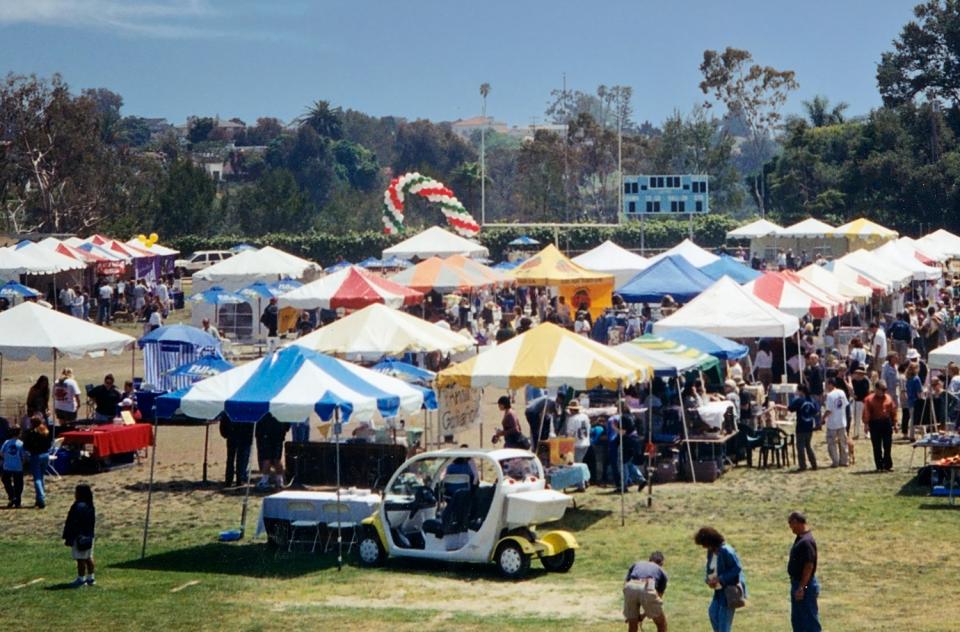
1991
Discovering Los Angeles
L.A. was a great place to do tabling, support local animal rescue efforts, and meet a few celebrities along the way.
Co-founders Francis and Silva Battista began spending a lot of time in Los Angeles as they built a local program while fundraising on behalf of the animals back at the Sanctuary. Best Friends’ no-kill message resonated with local advocates and rescuers. In the early 1990s, L.A.-area animal shelters, both city and county (12 in all), were all high risk for the animals who entered. At a time prior to the internet, social networking, personal digital cameras, or sites like Petfinder, stray animals had three days to be claimed and owner-surrendered pets had one if they were lucky. readmore
Understandably, animal lovers who found a stray were reluctant to take a lost dog or cat to a shelter and had to rely on local rescue groups or their own resources to ensure the safety of the stray or homeless pets they were trying to save. Francis and Silva created a pet adoption bulletin to support such individuals and distributed it through a network of volunteers across the greater Los Angeles area.
They also set up an emergency helpline staffed by a rotating team of volunteers to help the public with animal issues of every type, developing a dictionary-sized handbook of resources from volunteer trainers to poison control. The hotline was a significant community resource following the 1995 Northridge earthquake that sent dogs and cats heading for the hills and rubble piles across the area.
It made sense that the animals would win if we all worked together. In 1997, to make better use of the many volunteers who were flocking to the Best Friends banner, they set up teams of work-ready volunteers, which were called Best Friends Brigades, to help local rescue programs complete cleanup, building, and painting projects that small organizations had trouble completing.
It being Los Angeles, Francis and Silva also met many people in the entertainment industry — agents, publicists, producers, directors, and actors who were eager to help. They produced PSAs with celebrities like Ellen DeGeneres, Laura Dern, Kelsey Grammer, and others. By 1993, they hosted our first celebrity benefit at the famous Chateau Marmont with guests including the cast of Beverly Hills 90210, supermodels Claudia Schiffer and Nastassja Kinski, as well as Rene Russo and a squadron of hip Hollywood. The event was eventually branded the Lint Roller Party with the taglines “Dare to Wear Black” and “Glitz, Glamour, Pet Hair” and with A-list guests such as Charlize Theron, Hilary Swank, Bill Maher, Laura Dern, and Debra Messing.
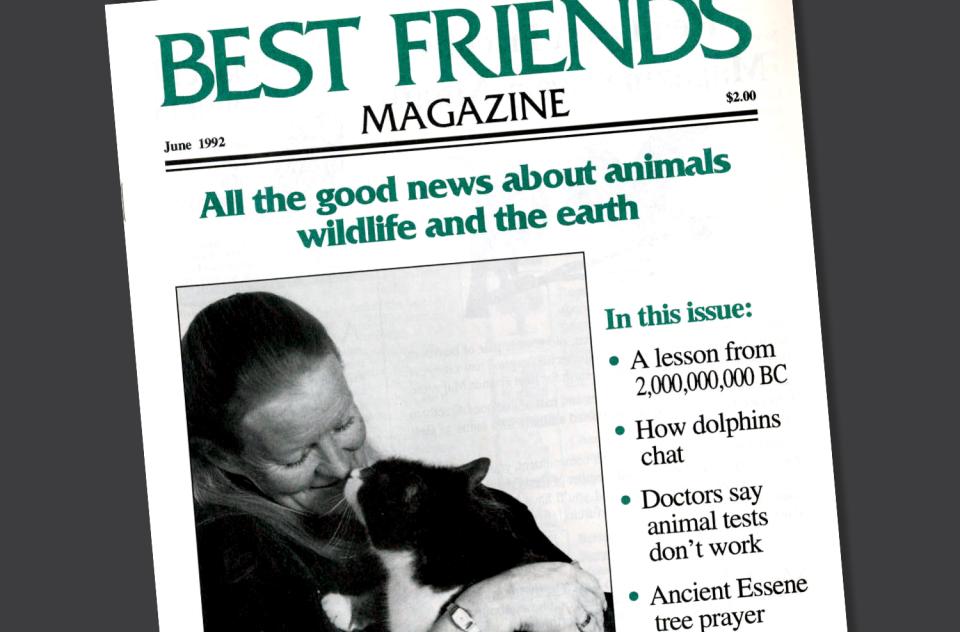
1992
Best Friends magazine
Best Friends began regularly communicating with all our members, including with a new magazine, to keep folks up to date and spread “all the good news” about the animals.
It started with a bulletin board in the passageway on the wall between the kitchen and old laundry room at Angel Village. It was called the Wall of Triumph, where Michael Mountain would post stories of good news about the animals — basically to cheer up other founders who were up to their eyes in bad news at the time. That bulletin board was the model for what was to become Best Friends magazine. readmore
From the very start, we knew that we never wanted someone to be afraid to open one of our magazines or letters. We wanted all our communications to be positive. That meant no gruesome photos of animals in distress, no threatening that the sky would fall unless you donate. There was plenty of that out there already. And if the founders, who were pretty hardcore, couldn’t bear to look at those magazines, why would we want to inflict that sort of horror on our friends and supporters? There was an unwritten covenant with our members never to inflict guilt-making photos or stories.
That’s the idea that guided co-founders Michael Mountain and Steven Hirano when they began sending letters to our members and started Best Friends magazine — “All the Good News About Animals, Wildlife, and the Earth.” We wanted to share the good news that was happening for animals around the world and celebrate the people who were helping them.
The magazine even had a cat named Tomato who had his own column — which led to a Pulitzer Prize. Seriously.
With that dedication to being uplifting and having a conversation, Best Friends magazine became a permanent touchpoint of the Best Friends community and remains so to this day.
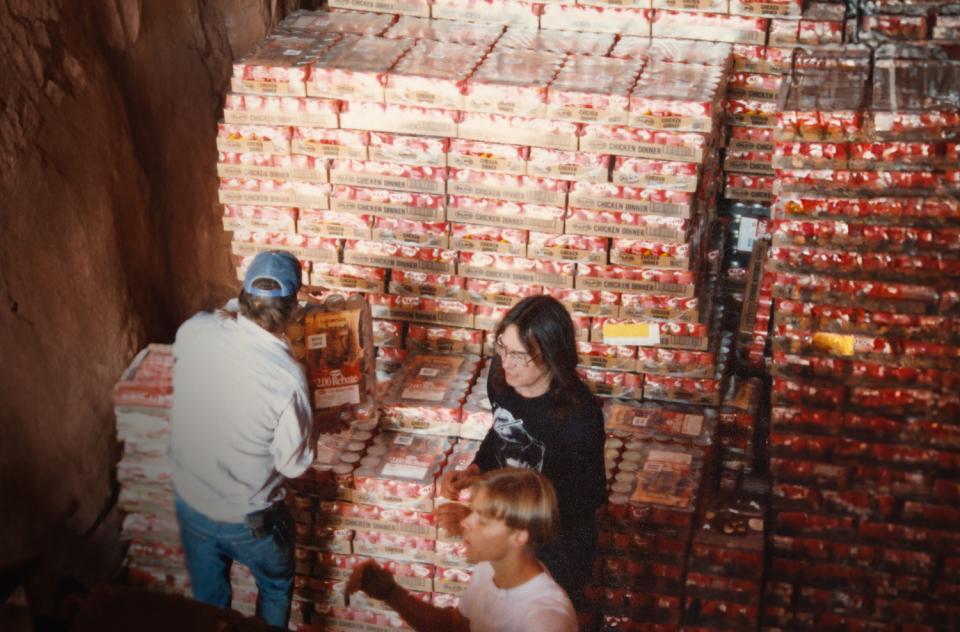
1993
The great Alpo delivery
“When we were told that $2,000 could get us $20,000 worth of dog food, we learned how simply to ask our members for what the animals needed. And Best Friends’ communications were born.” — Michael Mountain
Alpo had an enormous amount of excess dog food that had missed its flight to Japan. Graciously, they offered it to Best Friends, but we would have to provide transportation. The trucking would cost $2,000, and our spare change added up to less than a fraction of that. Read more
But that food would go a long way toward helping the animals. So for the first time, we reached out to the couple hundred people who’d signed up for our mailing list through tabling.
Without making people feel guilty or sad, co-founder Michael Mountain simply explained the situation. And in response, the money for the food delivery came pouring in. That was the beginning of an ongoing relationship with many of our members.
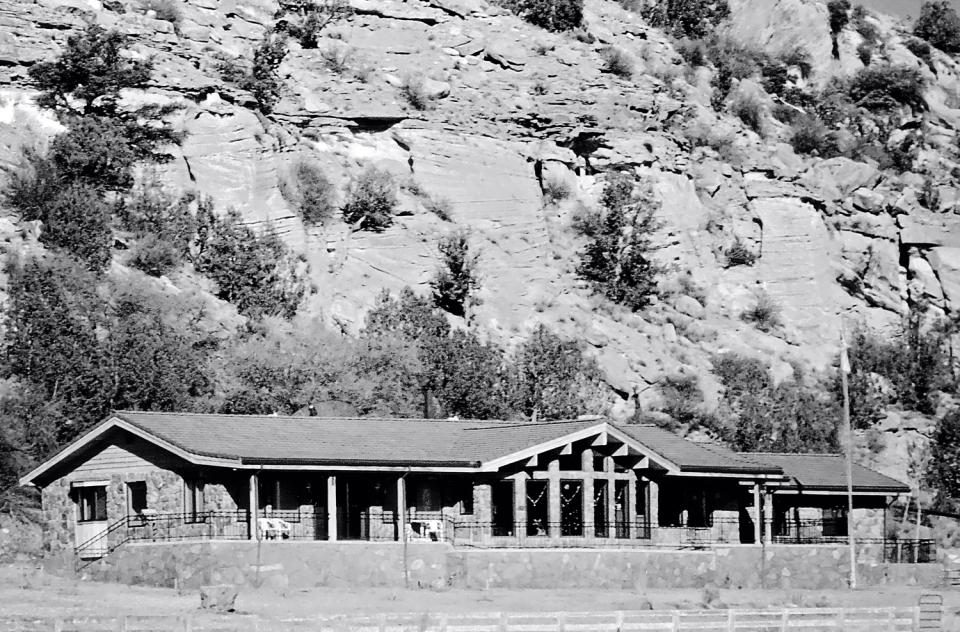
The early '90s
The serpent and the canyon
Before Best Friends turned Angel Canyon into an animal sanctuary, it was a ranch owned by one of the pioneer settlers who divided the land and left the north half to one of his sons and the south to another. When western movies started to be filmed here in the 1920s, Angel Canyon was a regular location feature, often depicted as “somewhere in Texas.” In the 1970s, the property was purchased by Golden Circle Tours, a local business jointly owned by a collection of community shareholders. Read more
Well, eventually western movies went out of style, and the cost of hauling all that equipment, cast, and crew across the desert to little old Kanab no longer made economic sense. After The Outlaw Josey Wales and a few episodes of Grizzly Adams, the canyon was kind of a white elephant, and the cost to maintain it offset any tourist benefit except for one of the principal shareholders, who had bought out many smaller investors. He lived at what is now the Best Friends Welcome Center and operated a Cowboy Cookout on what is now Angels Landing, with a hayride up the canyon for bus tours that started in Phoenix and overnighted in Kanab before going through Zion National Park and eventually ending up in Las Vegas.
There were two factions in the ownership group: one who wanted to sell the Movie Ranch (as it was known) and use the proceeds to build a golf course east of town and the other, led by the Cowboy Cookout person, who wanted to keep it — mainly because he lived here, ran a few head of cattle, and made a nice living on the cookout business.
When we made an offer on the property, it was so contentious that a judge ordered a shareholder meeting in the basement of the local bank in January 1984 to put it to a vote. Well, cookout man was prepared to kill the deal unless we agreed to carve out 40 acres at the mouth of the canyon where he would live and enjoy his share of the profits. We had a right of first refusal on that 40 acres but didn’t have the money to execute a purchase when he informed us that he had a buyer and was ready to ink a deal.
It was a sad day.
But when the would-be buyer arrived to close the sale, she was spooked by a whip snake hanging around the pond in the front yard. Whip snakes are long and slender, as their name suggests, and can grow up to 6 feet long. They are harmless to humans, but this particular buyer was having none of that and jumped into her car never to be heard from again.
We took it as a sign, and Faith called one of our early donors who came to the rescue, buying the parcel for cash and leasing it back to us for years at a reasonable rate until we could buy it outright. If you’ve been to Best Friends, you know what a beautiful setting that is, serving as home to Marshall’s Piggy Paradise and our administration building and of course the Welcome Center. That’s how the serpent saved a portion of the canyon for Best Friends.
1994
Angels Rest
We set aside an especially beautiful part of Angel Canyon as a memorial park, not only for the beloved animals of Best Friends but also for the pets of members and friends and all who love animals.
It's called Angels Rest, and all who visit there remark on the sense of completion and tranquility that surrounds the animals when we say goodbye and let ourselves lay them to rest.
It's a memorial garden filled with loving tributes to members’ own pets and a final resting place for any animal who passed away at the Sanctuary. readmore
With an ornate front gate, it was designed to be an uplifting place: scenic, expansive, brimming with meaningful objects, soft pathways, and windchimes ringing in the breeze. It was designed for remembrance, rather than sorrow. And in time, people began making special pilgrimages just to attend services here or spend some time alone reflecting.
watch videoMore than a place
As the Sanctuary continued to grow, so did our nationwide community — and so did our collective determination to save even more pets. Best Friends Animal Sanctuary was about to become Best Friends Animal Society.
Beginning in 1990 as the founders took the no-kill message to communities around the West through their tabling work, they gathered volunteers and created programs and events in support of local lifesaving programs. These efforts sowed the seeds of collaboration that would bear fruit in the coming years, especially in Salt Lake City and Los Angeles where model programs that would be adopted by organizations across the country were developed.
The energy and innovation that forged the Sanctuary was having an impact across the country. And while the nationwide community of Best Friends cared deeply about the pets at the Sanctuary, they also cared about the animals in their own communities. There were millions of dogs and cats being killed in shelters across the country every single year. We all wanted to do more.Read more
Best Friends magazine was launched in 1992 and became an essential tool in spreading our message.
The Sanctuary would always be Best Friends’ heart and home. It would continue to pioneer innovations in animal care and boast ever-improving vet facilities, training grounds, and animal residences. It would always be a welcoming respite for pets who needed extra time and care. But it was time to look beyond the canyon to see what else we could do to save the lives of pets in need.
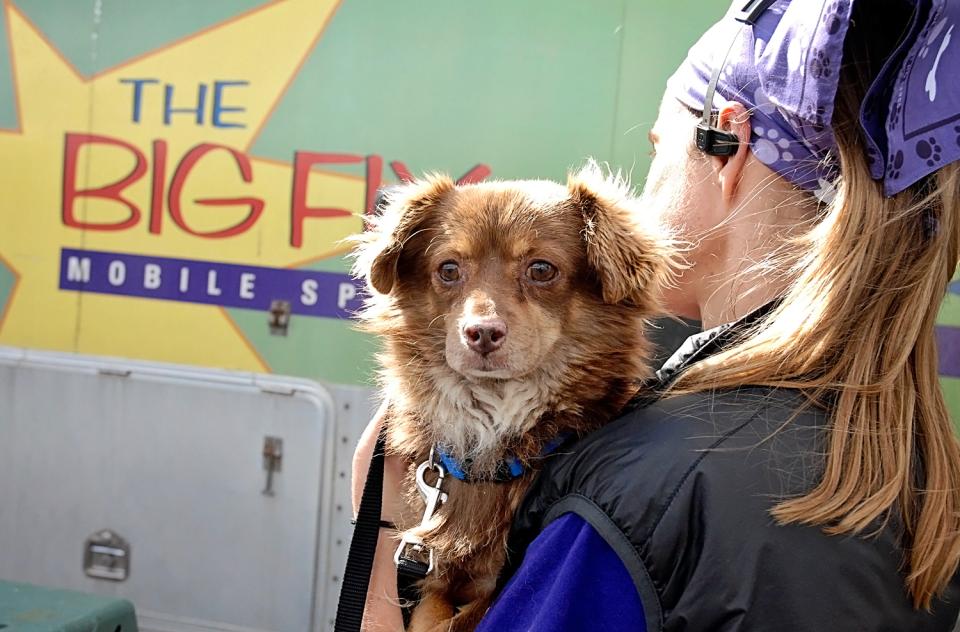
1994
Utah
This was Best Friends’ first campaign to bring the no-kill philosophy (and results) to pets in shelters.
It made sense to start at home. Once we knew that we wanted to do more, help more, and save more lives, we turned our attention to helping animals in our home state of Utah. It was estimated that about 46,000 dogs and cats were being killed in shelters throughout the state every year (similar to many other states). And it was the time to do something about it. Read more
In 1994, Gregory Castle organized the first-ever statewide promotion to highlight animal issues in Utah called Utah’s Week for the Animals. The governor signed a declaration proclaiming the week, and co-founder Nathania Gartman, a national pioneer in humane education, developed a curriculum that went to students from kindergarten through grade 12 across the state. It included a lesson plan on animal issues and a statewide student art competition. The promotion advanced spay/neuter efforts and featured adoption events.
In 2000, we launched the No More Homeless Pets in Utah Coalition powered by the recently created Maddie’s Fund® with a $7 million grant over five years. This later became No-Kill Utah, or NKUT, and it brought together rescue groups, shelters, businesses, and government entities across the state, all with the aim to save pets’ lives.
The Utah campaign brought more creativity and innovation — The Big Fix, a mobile spay/neuter unit that traversed rural Utah; a spay/neuter voucher program to support low-income people with pets; Furburbia, a high-end adoption center in wealthy Park City.
By 2014, the number of pets killed in Utah shelters was down to about 8,000 (less than a quarter of what it had been). And in 2024, the governor of Utah signed a declaration committing to no-kill for Utah’s pets.
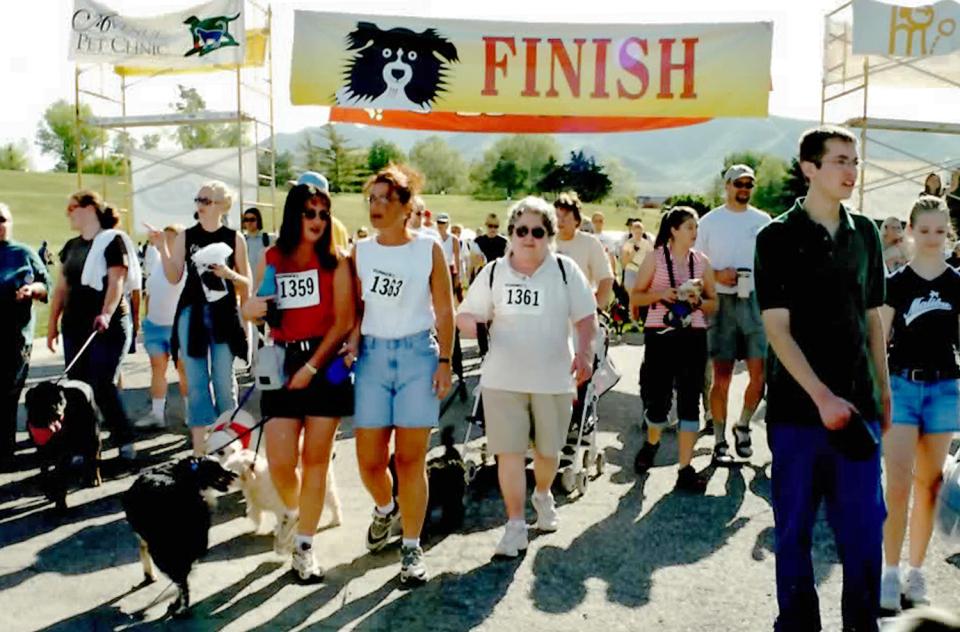
1995
Strut Your Mutt
Best Friends’ popular dog-walking event became a fundraising force nationwide.
The first Strut Your Mutt was in 1995 when a 20-something-year-old volunteer for Best Friends Animal Society had an idea of putting on a dog-walk fundraiser for the organization in Salt Lake City. She had to pull together the corporate sponsorship to cover the cost of putting on the event. “It will be a huge success!” she told herself. It wasn’t. But there was something special about it. That volunteer was Julie Castle, who would one day become CEO of Best Friends. And it did move beyond that first event where it gradually took off as a popular event in cities across the nation. Read more
Best Friends’ Strut Your Mutt looks like a mob of dog lovers, cheerfully taking over the streets and leading their tail-wagging friends on the walk of their lives. There’s music, and there are contests and various dog-themed entertainment. But at its core, it’s a fundraising event, where people gather sponsors and then walk for the lives of homeless pets.
One of the things that made it unique from the start is that while Best Friends threw the events, walkers could choose to raise money for the animal welfare group of their choice, and those groups would keep 100% of the money raised for them with some groups raising their entire operating costs at that one event.
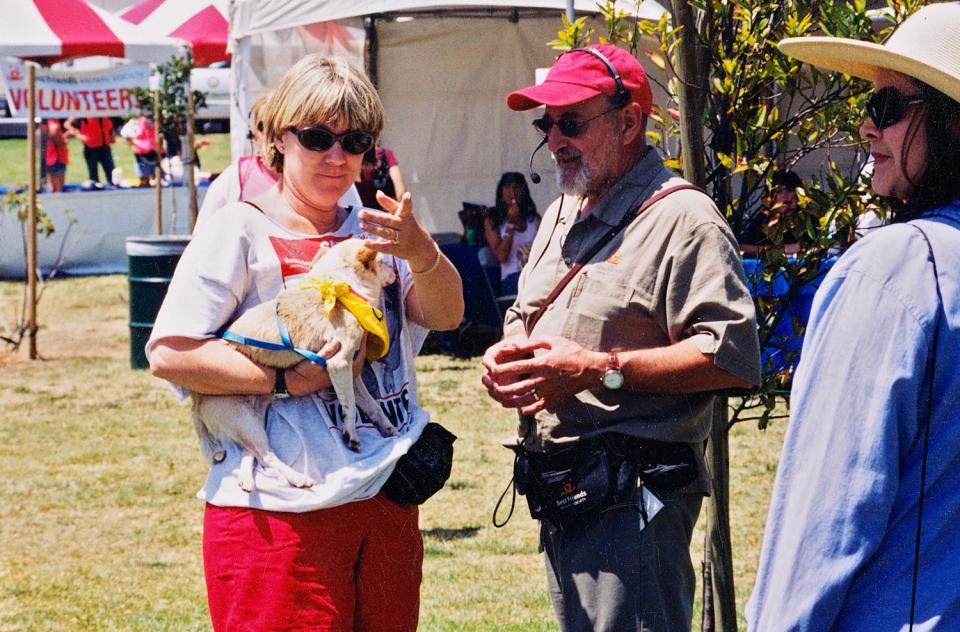
1999
Los Angeles
Another hotbed of Best Friends’ innovation was Los Angeles, where Francis and Silva Battista were cracking the code of getting national media attention on no-kill via Hollywood while building a coalition of shelters and rescue organizations.
The first Best Friends Super Adoption was held in Los Angeles at the La Brea Tar Pits in 1999. At the time, animal rescue organizations were quite competitive with each other and believed that adoptions and fundraising were a zero-sum game. Many were splinter groups from older organizations with unresolved issues between their leaders. It wasn’t helpful for homeless pets. Read more
When Francis began to recruit L.A. organizations to participate in the first Pet Adoption Festival, he encountered a lot of skepticism and resistance. The idea of sharing a park with the competition was, surprisingly, a new and unsettling idea for many. But it was a huge success and totally L.A. and totally theatrical. There were 15-foot-tall puppets, children’s activities, flyball and dog agility demonstrations, fire jugglers, musicians, caricature artists, some guy making balloon animals, food trucks, and pet psychics! Best of all, hundreds of homeless pets went to new homes, the super adoption event was born, and collaboration and cooperation became cool.
Over time, many thousands of animals have found their homes through super adoptions. What makes these events so special — and important to the no-kill movement — is the effect the events have far beyond the animals who go home during that period. They bring the cause to the community’s attention, generate media coverage, attract and engage volunteers, unite the animal welfare community with a common goal, and, of course, promote adoption as the option.

2001
Best Friends National Conferences
Originally called the No More Homeless Pets Conference, the first one was held in Virginia Beach in 2001. About 300 animal lovers attended.
Today, thousands attend what’s now called the Best Friends National Conference, which is held in a new city each year.
But the reason for the conference is the same as it was when it began: Homeless pets need us all to work together. They can’t afford rivalries, lasting feuds, or jealousies. They need us to join hands, so we can save more lives. And that begins with communication. Read more
From the very beginning, Best Friends’ conferences were a place where speakers share best lifesaving practices, where groups who have never met before can exchange business cards and start working together, and where people who want to get involved in animal welfare can learn how. To many, they’re the answer to that refrain we heard so often when we first opened the Sanctuary: “I thought I was the only one.” Conferences have been another way for people to learn that they’re not!

2003
Changing our name and logo
Now that our work had expanded beyond the Sanctuary, it was clear our name needed to reflect that. And how we decided to change our logo turns out to be a funny story, as told by Francis Battista.
Following the No More Homeless Pets Conference in 2001 that was held in Virginia Beach, Virginia, we stuck our nose into a local controversy with national lifesaving ramifications. A local trap-neuter-vaccinate-return (TNVR) group called Meower Power had been managing a colony of kitties on the U.S. Naval Station Norfolk. Read more
Norfolk is also home to PETA, the animal rights organization, which has historically opposed TNVR programs other than those undertaken according to its very prescriptive and restrictive guidelines. Best Friends has long been a champion of TNVR. And Meower Power had appealed to us for support prior to the conference, as they were getting hassled by the base commander as well as by PETA. As I recall, the reason for convening in nearby Virginia Beach had a lot to do with the Navy and PETA vs. Meower Power dustup.
It all came to a head when the base commander sent the issue upstairs to the chief of naval operations in Washington, who reports to the secretary of the Navy.
Meower Power asked then-Best Friends President Michael Mountain to send a letter in support of its important work to the chief of naval operations, which of course he did.
Here’s how it shaped up:
- In this corner: The base commander, PETA, and HSUS, which was also mostly against TNVR at the time
- In the other corner: Meower Power and some group from Utah with the letterhead logo of six waving cartoon animals!
No prize for guessing the decision of the chief of naval operations. Our side lost.
The big takeaway from that episode was that we were now indeed a national organization, we needed a name that wasn’t attached to a specific location, and we needed a logo that had more gravitas that our beloved cartoon animal mascots!
We hired a heavy-hitting firm out of L.A. to work with us, and after a series of facilitated meetings at the Sanctuary and a design competition among their staff, the organization was rebranded from “Sanctuary” to “Society.” And we had a new, impressive, but not-too-corporate logo, which Lee Clow, the guy who managed the creation of the Apple brand, regarded as iconic as Nike's “Swoosh,” Target’s bull’s-eye, or Starbucks' mermaid.
We got it right, all thanks to Meower Power and the chief of naval operations and the kitties.
Answering the call
When disaster struck New Orleans in 2005, instinctively we headed down there to help out, taking the love and magic of the Sanctuary on the road. And that was the beginning of a new chapter in lifesaving.
When Hurricane Katrina was gathering strength over the Gulf of Mexico heading for New Orleans, we knew that Best Friends was heading for our first hands-on disaster response. We had previously raised funds for and directed support to local response organizations for California fires, Midwest floods, and even the south Asian Tsunami in 2004. But this monster was heading for friends, family, and partner organizations in New Orleans and the Gulf Coast region. Thanks to contacts and connections of our co-COO at the time, Paul Berry, who had been a humane officer in Louisiana, we had an open-door invitation to the front lines. While the official response was notoriously log-jammed by red tape, Best Friends was the first national organization pulling stranded pets out of the flood waters.
Given our experience in the aftermath of Hurricane Katrina in handling and rehabilitating traumatized dogs of every size and disposition, we knew that all dogs are individuals and should be given the opportunity to flourish that their prior circumstances may have denied them. So when official policy and other national animal organizations were calling for the killing of the dogs rescued from Michael Vick’s dogfighting ring, we believed that these dogs should be given a chance to flourish as well.
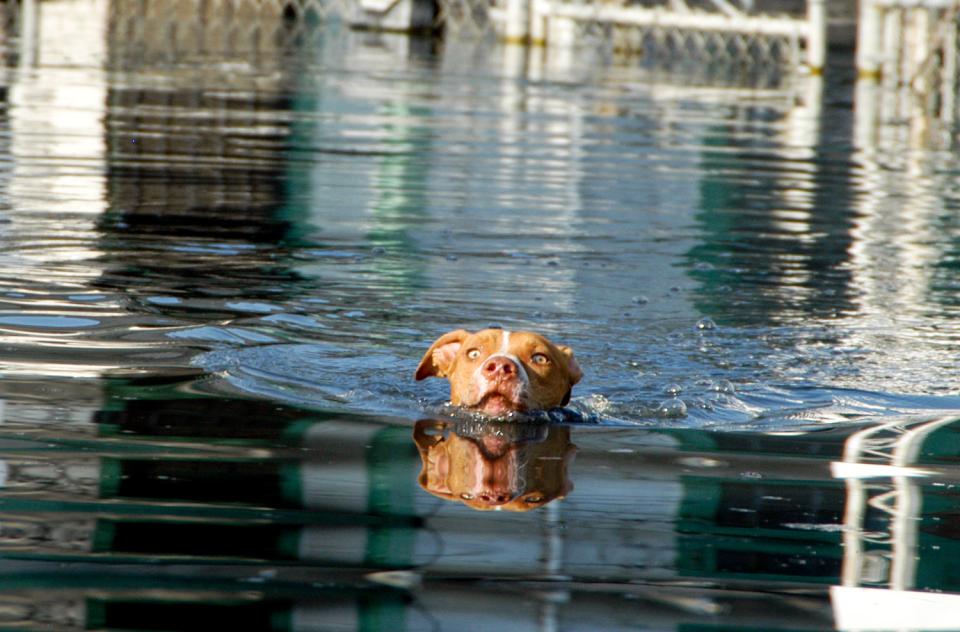
2005
Hurricane Katrina
In the wake of massive flooding in New Orleans, a team from Best Friends got out on the water in Jon boats and began rescuing animals.
It was a devastating flood that cost many lives. Hurricane Katrina led to flooding that was one of the worst natural disasters in recent history.
The situation for pets was also terrible. Families had been ordered to leave their animal family members behind to evacuate. Sometimes at police gunpoint. Those pets had little chance of survival. The rescue effort went on for months, as all types of pets were found abandoned in flooded homes, exhausted and near death. Read more
Some suffered chemical burns on their leg, bellies, and sides from the ruptured chemical storage tanks. The lucky ones were able to swim to a rooftop; the unlucky drowned at the end of their chains as their yards flooded. The longer they were on their own, the worse their condition.
Best Friends was the first animal organization to get on the water in boats. We had set up a disaster response shelter on the grounds of St. Francis Animal Sanctuary in Tylertown, Mississippi, where rescued pets could be seen by a vet and cared for until they could be reunited with their family or placed with partner no-kill rescue groups around the country for fostering. In the meantime, we rowed through the city, picking up any animal we could see and save.
The event marked a new era in the work of Best Friends. It was the first time we’d taken what we knew about animal care and used it to respond to an emergency. In so doing, we introduced no-kill policies and practices to disaster response for animals and forever changed the way that work was done. But it wouldn’t be the last time.
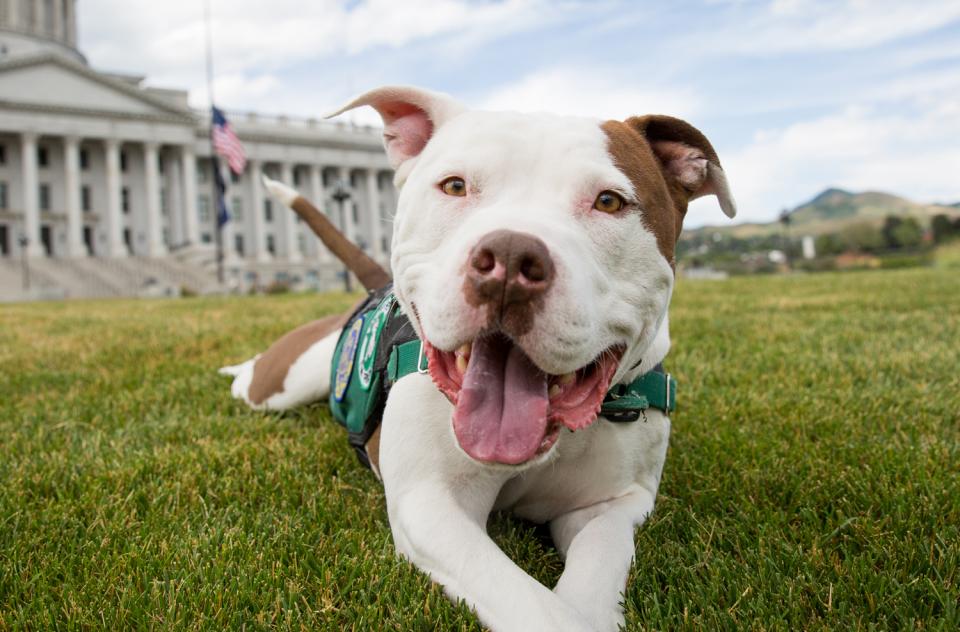
2007
Creating a network
To answer the cry of pets in shelters across the country, we created the Best Friends Network of like-minded groups around the country, who sought the assistance of Best Friends and one another, to help them work better and stronger.
The ongoing emergency of millions of pets being killed each year in shelters continued to be our main focus, and we took some of what we’d learned from major rescue efforts to organize a strategy for saving more of them. Read more
We launched what would become the Best Friends Network by reaching out to animal welfare groups who do good work in every corner of the country and asking them to join our new network for free. The benefits were small at first, but they grew over the years to where our network partners could take part in our adoption events, fundraisers, and even apply for grants. It got people who are working on the same problem to work together.
We then put a frame around the work we were all doing to keep us focused on strategies that would seem to help the most animals. We broke it down into four campaigns: help animals stay in their homes; keep community (aka feral) cats out of the shelters; stop the outlawing of pit bull terriers, who were making up a lot of the shelter population; and get people to adopt pets instead of buy from puppy mills.

2008
The Vicktory Dogs
Best Friends took in 22 of the hardest-to-place dogs found on the property of Michael Vick.
It was another harrowing news event. Former NFL quarterback Michael Vick had been arrested after a dogfighting ring was found on his property. Dogs had been horribly abused there and forced to fight one another. Some of them were so traumatized that it didn’t seem likely they could ever live normal lives again. Read more
Best Friends got involved in the legal battle to make sure that the dogs were not summarily killed for being the victims of a dogfighting ring but were instead evaluated individually. This succeeded and became a huge win for dogs everywhere who would be seized in dogfighting busts. It meant they would no longer automatically be deemed dangerous just for having gone through what they went through.
Many animal groups then stepped in to offer the dogs shelter, and Best Friends took the 22 who were deemed hardest-to-place in homes. What happened with those dogs back at the Sanctuary was nothing short of a miracle. All of them developed at least some level of comfort and trust. And the vast majority of them became so friendly that they were able to be adopted into homes. That’s why we call them the Vicktory Dogs.
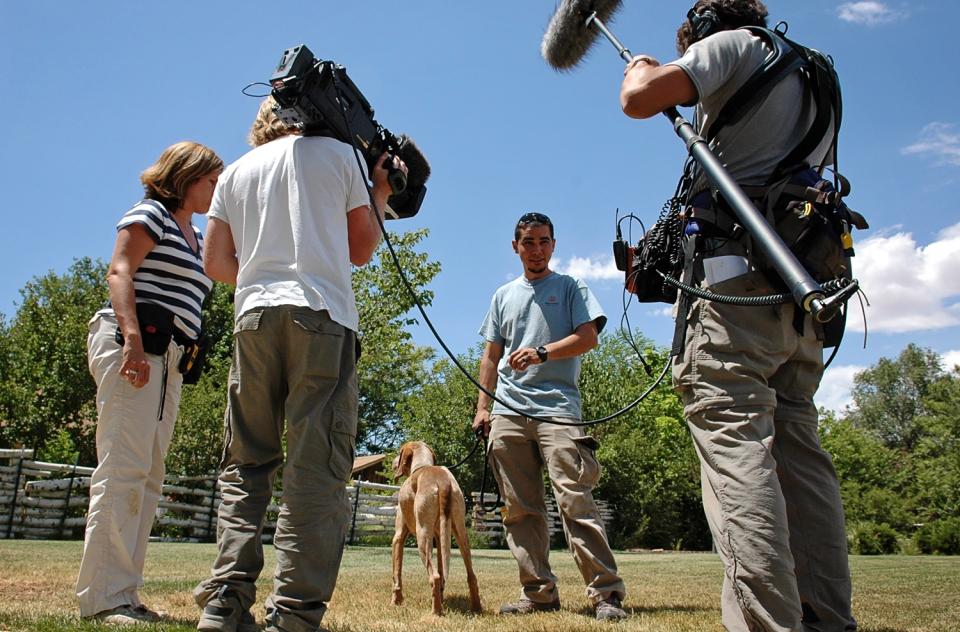
2008
DogTown, the series
Best Friends got its first taste of truly widespread national attention when National Geographic launched a docuseries filmed at the Sanctuary.
The National Geographic television series called DogTown marked a fun and different period for Best Friends. The crew was already filming the day that the Vicktory Dogs arrived at Best Friends and because of that was able to follow and tell the story of their progress. During the four-season run of the show, it brought dogs at the Sanctuary to screens in living rooms across America. Read more
The show highlighted some of the dogs with special needs or dramatic backstories and turned a few of our caregivers, trainers, and vets into television personalities. And it was all filmed over the course of regular life at the Sanctuary. The series has been off the air for years, but to this day, many people visiting the Sanctuary say that they first learned about us from DogTown.

2012
NKLA
In late 2010, Best Friends began building a Los Angeles-based coalition modeled on No More Homeless Pets in Utah. With her experience in Utah, Julie Castle laid the groundwork building on the relationships and volunteers who had been cultivated over the years. Los Angeles is huge city in geographic size and in complexity. With six city shelters and a total intake of over 53,000 animals, a data-based strategy was developed over most of 2011, and the NKLA Coalition was built.
In 2012, we launched the NKLA initiative, aimed at turning Los Angeles into a no-kill city. readmore
Following on the success and learnings of our work across the state of Utah, we were able to get off to a running start.
One key to NKLA was in acquiring the use of the yet-to-open Northeast Valley City Shelter in Mission Hills. It was a state-of-the-art facility completed in 2008 with funding from a bond issue, but it was never able to open due to economy-related budget constraints. It was a game changer.
Thanks to the donated services of advertising genius Lee Clow, we launched an eye-catching NKLA-branded initiative for public support. We incentivized pet adoptions through our local partners, created foster programs and kitten nurseries to save the lives of some of the tiniest homeless pets, supported spay/neuter services, and more.
It worked.
When we first launched NKLA in 2012, only 56% of pets were making it out of shelters there alive. In 2020, the city became no-kill.
We also rebranded our work in Salt Lake City as NKUT (No-Kill Utah), modeled after NKLA. And we opened lifesaving centers in New York City and Atlanta. We had shown it could be done! And now it was time to do it everywhere.
Changing the world for pets
Ensuring that every healthy and treatable dog and cat has a place to call home has always been at the heart of what has made Best Friends unique. We built the Sanctuary back in 1984 to help as many homeless pets as we possibly could.
Creating the Sanctuary was the first step, but it was just a drop in the bucket. In fact, an estimated 17 million dogs and cats were killed every year in shelters back then. As we grew, the number of animals we were able to help, through our programs and our influence, grew as well. Many more lives were being saved, but the longer it took to complete the mission, the more lives that would be lost. It was time to take it to the finish line.
Together, we will create a no-kill country. Together, we will Save Them All.
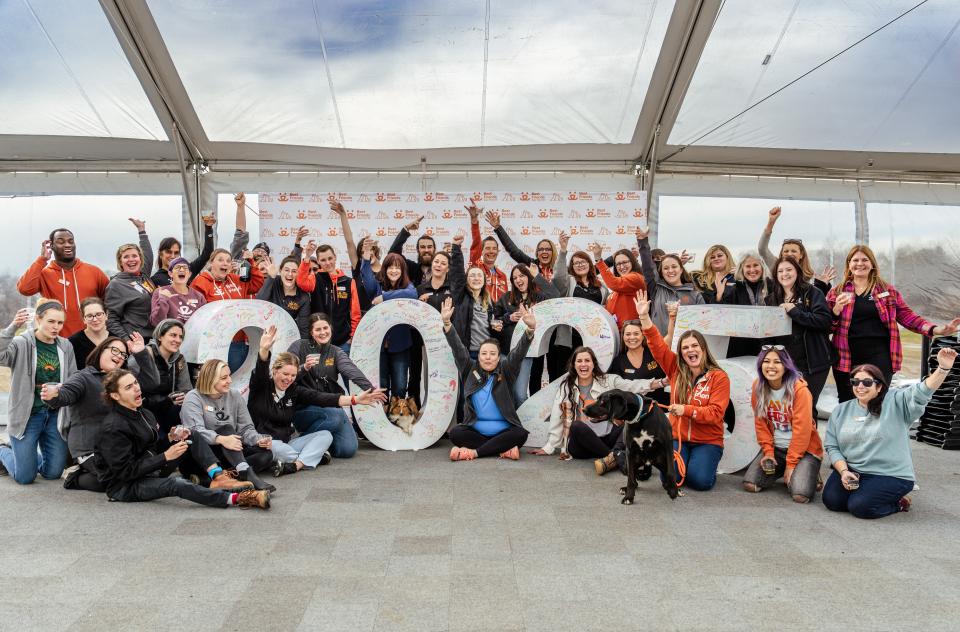
Moonshot
In 2016, Julie Castle announced Best Friends’ commitment to end the killing of dogs and cats in shelters across the country by the end of 2025. It would mean working hand in hand with other like-minded groups across the country; building strong, positive collaborations with shelters; thinking up creative and innovative programming; and coming together as a nationwide Best Friends community more than ever. And that’s what we’re doing.
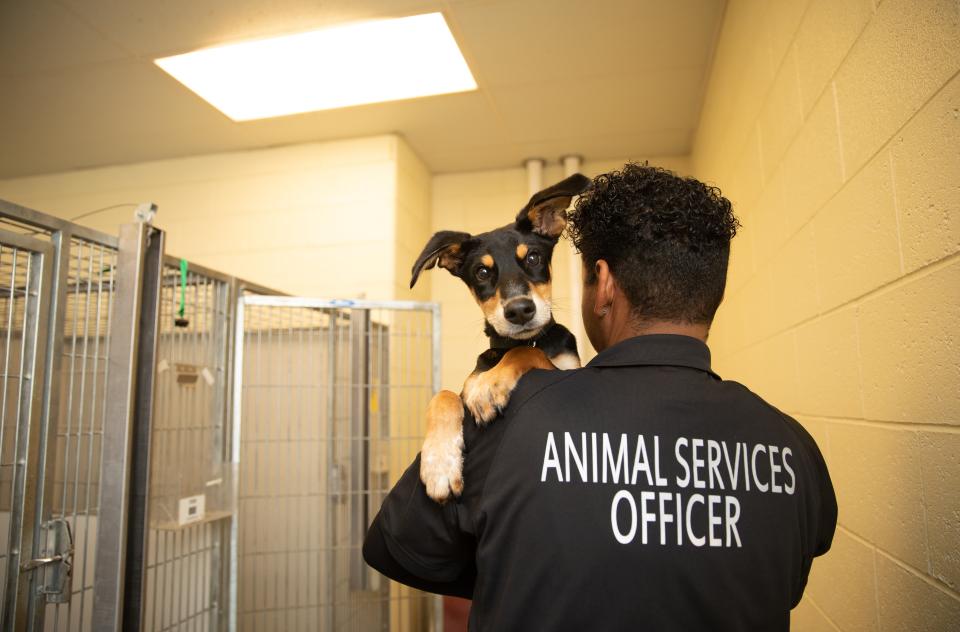
Making it happen
What would be needed to drive the movement to the next level? Pulling together a “dream team,” data-based targeted programs, Fast Company awards, and the shelter of the future would all play a role.
When Best Friends began in 1984, an estimated 17 million dogs and cats were killed in shelters each year. The number is “estimated” because it was just that: an estimate based on regional samples year over year tracked by one individual. We knew we needed a lot more detail. Read more
The previous estimate model, accurate or not in the aggregate, didn’t give any idea of regional differences other than anecdotally. When we started to dig deeper, we were in for a shock. No one — not the National Animal Care & Control Association (NACCA), not the American Veterinary Medical Association, HSUS, ASPCA, or the person publishing the estimate — even knew how many shelters there are in this country, let alone how many or what species of animals were being killed and where! We had our work cut out for us before we could begin targeting our work to the needs of communities and regions, rather than the one-size-fits-all approach that we and the rest of the movement had been following.
A revolution in animal welfare was about to unfold, beginning with data, data, data. Generic good works and best-practice prescriptions for communities that had it together enough to ask for help were not getting the job done. We needed a detailed temperature map of the country’s shelters and to be able to offer assistance to hot spots — in many cases even before local community leaders knew they needed it.
Like the ground-level, grassroots approach to our early funding efforts through tabling while simultaneously building a direct-mail dynamo, the next gen of Best Friends leadership went old school and high tech in tandem. The programs team deployed staff and volunteers to collect what data was available from literally every county in the country — via internet searches, Freedom of Information Act requests, and sometimes just picking up the phone and calling a rural county sheriff. Meanwhile, a data science team emerged from our information services department, along with the in-house development of the most innovative animal welfare tool since the introduction of shelter management software replaced index cards.
What emerged from the brainiacs department was a data-mapping tool that was open to all called the pet lifesaving dashboard, which gave detailed information on every brick-and-mortar shelter in the country. It was so good that Best Friends was recognized by Fast Company as one of 10 most innovative companies in the world on the strength of it — and not just for the nonprofit sector but for all companies of whatever stripe anywhere.
But even this breakthrough was dependent on data reporting by local shelters and municipalities, which often had a six-month to one-year lag time. We needed better data sooner, and so the real-time data project was launched. It wasn’t simply an in-house operation; it required custom interfaces and direct data feeds from multiple shelter data software vendors, complete with licensing agreements and multilateral agreements. This led to the launch of another first: the Shelter Pet Data Alliance that offers near real-time information for participating shelters.
The availability obligated a new approach, giving rise to highly targeted work such as the embed and shelter collaborative programs. At the same time, social turmoil highlighting a lack of diversity in our movement and an accompanying lack of access for under-resourced communities were reflected in our refined data. Not only did we have to target the work we did by community but also how and who was delivering that work.
Since one of the lessons Best Friends learned in its earliest days is that you can’t work alone, we grew the Best Friends Network until it surpassed 5,000 groups across the country. And we connected groups that were super-achievers with groups that were overwhelmed so that one could assist and mentor the other. We also set up an embed program wherein a Best Friends staffer would spend time working alongside a partner shelter’s staff, helping them achieve their lifesaving goals.
One truth that we have known since we set foot on this path is that homeless pets do not thrive behind bars in shelters, and sadly the design of animal shelters has closely tracked the design of human prisons with many of the same results — stress-induced behavior issues and coping behaviors. These tragic consequences often contribute to the rationale for declaring a pet unsafe for adoption and justifying the animal being killed.
A revolution in sheltering itself was long overdue. In 2023, Best Friends opened the Best Friends Pet Resource Center in Northwest Arkansas. Far from the old stereotype of a shelter full of cages and sad faces, it’s a bright and happy place where people can grab a cup of coffee, sit down with their computers and work, and meet some very cheerful animals. People can also get help and take advantage of resources for their own animals at home. Designed to be a new model for animal sheltering, it’s an example of what we hope every animal shelter will someday be.
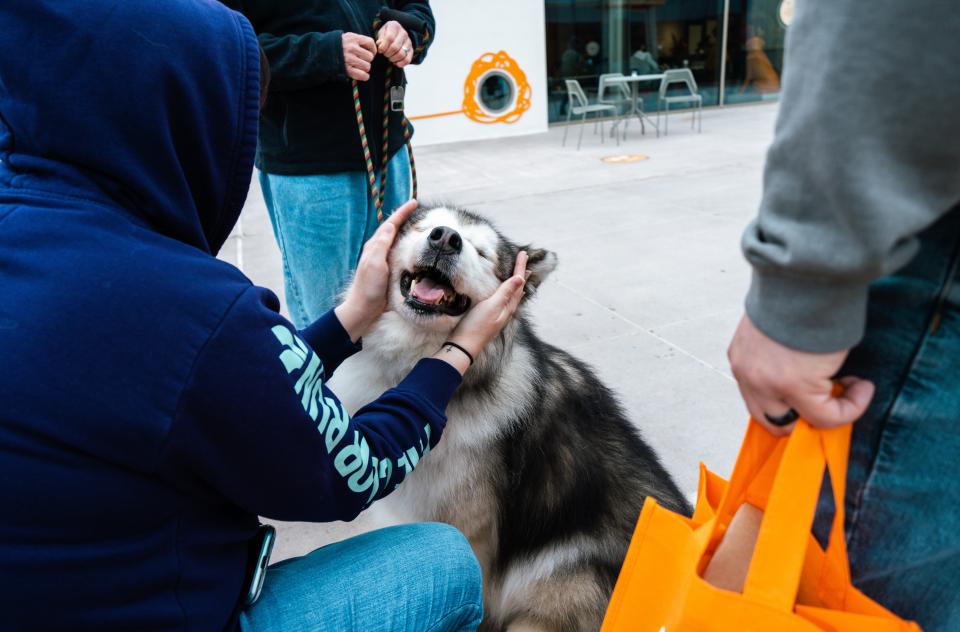
What’s next?
It all started with the founders of Best Friends, so let’s let them have the final word.
From Francis Battista, co-founder and board chair:
"I'm inspired by what people like Julie Castle and all the folks who came after us have made of Best Friends — of what they've done with this idea and this vision, turning it into an actual national movement.
You know, we have this purity of that idea, or the vision of that idea, from way back in the beginning of Best Friends. Yes, it was wonderful and magical. But what was done with that?Read more
We created a national movement, but we didn't actualize it on the ground in the way it is now. We didn't decide, OK, we're going to take the country now. We had this idea and this vision that someday this work would result in ending the killing of animals in shelters.
But having this deliberate, executable, decision-making plan to go forward and actually achieve it — and all the work that's been done — is so inspirational and so powerful and just blows my mind. The fact that this idea, this vision, has been actualized by some of the most talented and amazing people I've ever met is just beyond the beyond.
That it in some way connects to something that we started is both humbling and utterly inspiring.
I believe that Best Friends continues to be at the forefront of this movement that's gathering steam. The goal of no-kill in 2025 is just the beginning. We will continue our work until the entire country is no-kill and beyond. We — and I mean all of us together, not just Best Friends, not any one entity, but all of us — will need to work to sustain no-kill. And I believe that Best Friends will continue to be an influencer culturally, socially, and ethically in how we relate to not just the animals in our homes but the animals outside of our homes, the acts in nature, and the environment.
Save Them All has a bigger meaning than simply all the animals in shelters. It's an ongoing call of compassion toward our fellow creatures and toward the planet and toward each other.”
